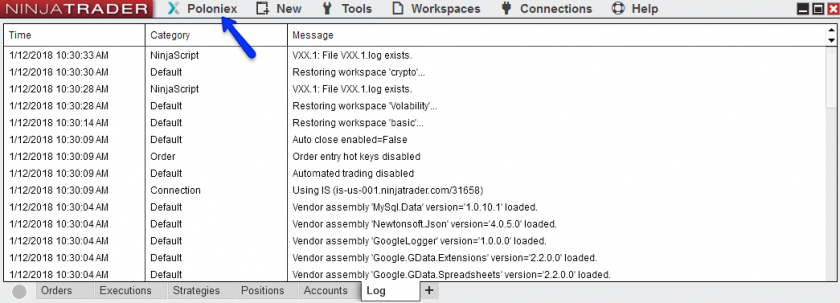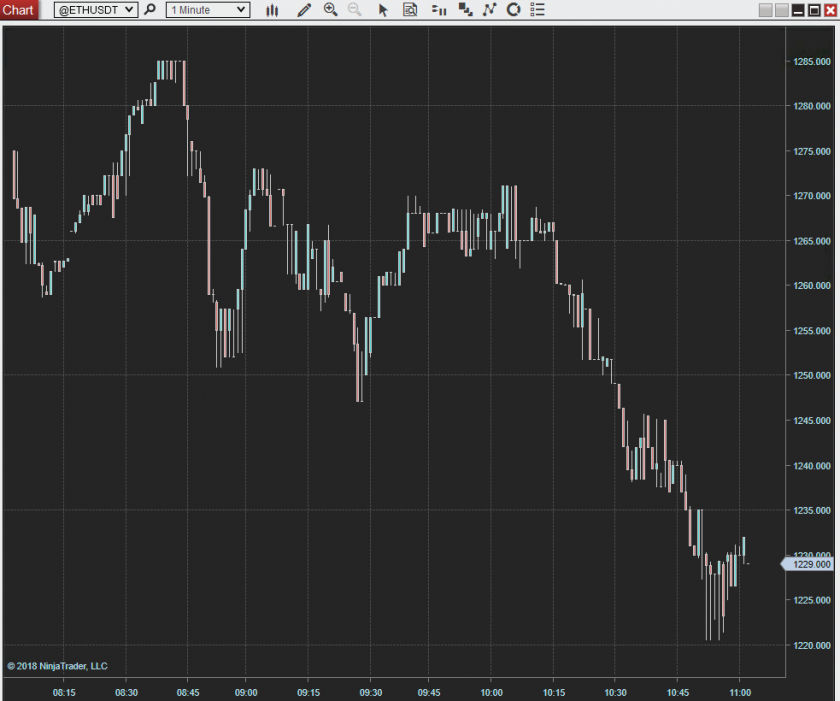Crypto Exchange Data Providers
Crypto Exchange Data Providers
This is the fourth installment of an ongoing educational series that will cover the nuts and bolds of crypto currencies as well as the skills and knowledge required in trading this new asset class successfully over the long term.
Now that you have established one or more trading accounts at your favorite crypto exchange you may consider accessing your provider’s public API in order to pull historical or perhaps live data, to then import it into your trading platform for further technical analysis. Well, forget about it. As of this writing available options are few and far between and most traders make due by using the online charting features provided along with their trading account. All of which in my not so humble opinion are underwhelming and I’m trying to be nice here.
Being able to drop one preconfigured SMA or perhaps a 2.0/20 Bollinger onto your chart may suffice the casual trader who just buys a dip and then goes into HODL hybernation mode for the rest of the year. However this article aims a little higher in that it will show the more serious and active retail trader how to pull historical or live data from a select number of data exchanges which are currently generous enough to stream it for free 24×7.
The Easy Way
We’ll cover the easy way first and it just so happens to be via NinjaTrader, a trading platform I have been using for nearly a decade now and which also serves as the underlying framework for my automated trading systems. You can use the above link to download NinjaTrader 8 for free – it’s only available for Windows so if you are reading this on OS X or another version of Unix then you’re unfortunately out of luck.
The way Ninjatrader works is that it offers professional data providers and brokers the ability to implement data connectors which give you access to historical and of course streaming live data. So in the past if you wanted to trade forex you’d simply configure for example an FXCM connector with your account login and password and then launched the data feed. Pretty simple and it works the same for futures or stocks as long as the data is supported by the connector. Click here to find help guides on configuring various regular (non crypto related) connectors, however they won’t help you with pulling crypto related data unless of course it’s the CME or Cboe futures.
Plugins To The Rescue
Now once you’ve set up NinjaTrader it’s time to get your hands on some of that juicy crypto data. And for that you’ll have to download and install one of the three NinjaTrader plugins currently available over at NinjaTools:
- NinjaTools Binance Plugin: This plugin adds Binance altcoin exchange support to NinjaTrader. It supports historical tick/minutes data backfill, real time data streaming, and exchange trading.
- NinjaTools Bitfinex Plugin: This plugin adds Bitfinex bitcoin exchange support to NinjaTrader.
It support historical tick/minutes data backfill, real time data streaming, and exchange/margin trading. - NinjaTools Poloniex Plugin: This plugin adds Poloniex altcoin exchange support to NinjaTrader.
The plugin support historical tick/minutes data backfill and real time data streaming.
If you do not have an account with either Binance or Bitfinex then you can still download the Poloniex plugin which doesn’t require an API key. Of course that means you won’t be able to actually trade live but you can still pull data and use it for your charts.
Once you downloaded the plugin you simply install it per the instructions provided. Restart NinjaTrader and you’ll see a new menu in the main console. Since my Binance account is still going through verification I downloaded the Poloniex plugin:

You’ll need to setup your account by clicking on that menu (either Poloniex, Binance, or Bitfinex) and selecting ‘settings’. For Poloniex you don’t need any account details, it’s just for show. On Binance or Bitfinex you’ll need the API key you created in your trading account. Once that’s done you will be able to click on that account name you created which will initiate the data connection and Bob’s your uncle.

An additional caveat with Poloniex is that they for some reason do not offer 1-min intervals. According to my ccxt exchange profile script these intervals are offered via their internal API: tick data, 5-min, 15-min, 30-min, 2-hr, 4-hr, 1-day. And that means that the author of the plugin had to implement minute intervals based on tick data, which takes its merry time to get pulled. So if you need 1-min data you’ll need to be a bit patient, however it works well as shown in the chart above.
The Hard Way
Tip To Non-Coders: Even if you the type that prefers to wind up your mobile phone by hand in the morning I still recommend that you read on as the exchanges listed below may help you in deciding which one to subscribe to just for charting purposes.

It's not too late - learn how to consistently trade without worrying about the news, the clickbait, the daily drama and misinformation. If you are interested in becoming a subscriber then don't waste time and sign up here. The Zero indicator service also offers access to all Gold posts, so you actually get double the bang for your buck.
Please login or subscribe here to see the remainder of this post.
Did You Notice Anything?
With the exception of GDAX and perhaps Binance (which I unfortunately didn’t list in my third installment – damn you bitcoinity!) none of the exchanges shown above are in our preferred list of crypto exchange providers when it comes to actually opening and actively using a trading account. Which was the reason for writing this post in the first place as we as traders apparently need to turn to different exchanges when it comes to pulling chart data and actual trading activity.











